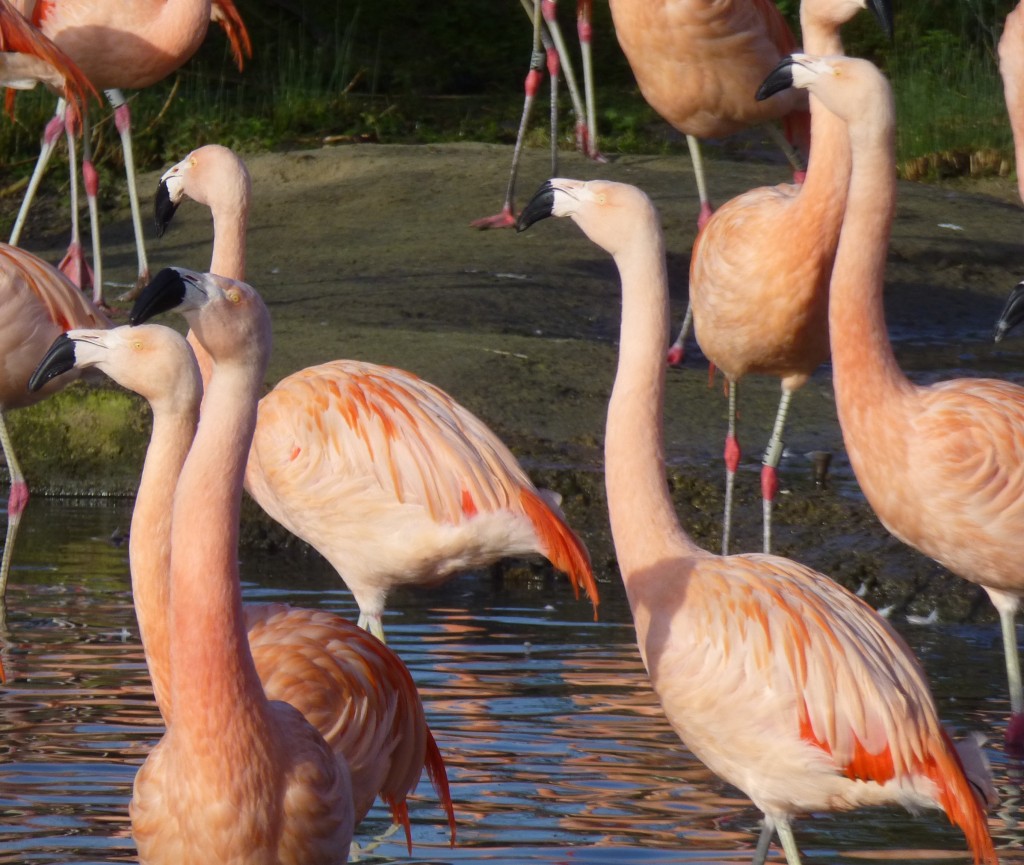Flirting flamingos in February
It's the month of Valentine's Day and the flamingos seem to know it! Or they might just be pleased that the rain (hello Storm Imogen?!) has gone away and they have been let out to play... There have been some very interesting courtship displays cropping up this week, the birds benefitting from the lovely sunshine that was around on Tuesday especially. Flamingos will court all the way through the year. Whilst nesting and chick-rearing is confined to periods with maximum sunlight (and warmth for some species), their display can be seen even when it's still wintertime. So what has been going on this week? It's been a period of very intense display in the three big flocks at WWT Slimbridge and the birds have been head-flagging relatively continuously throughout the day, so you should be able to get a good view of their dancing.
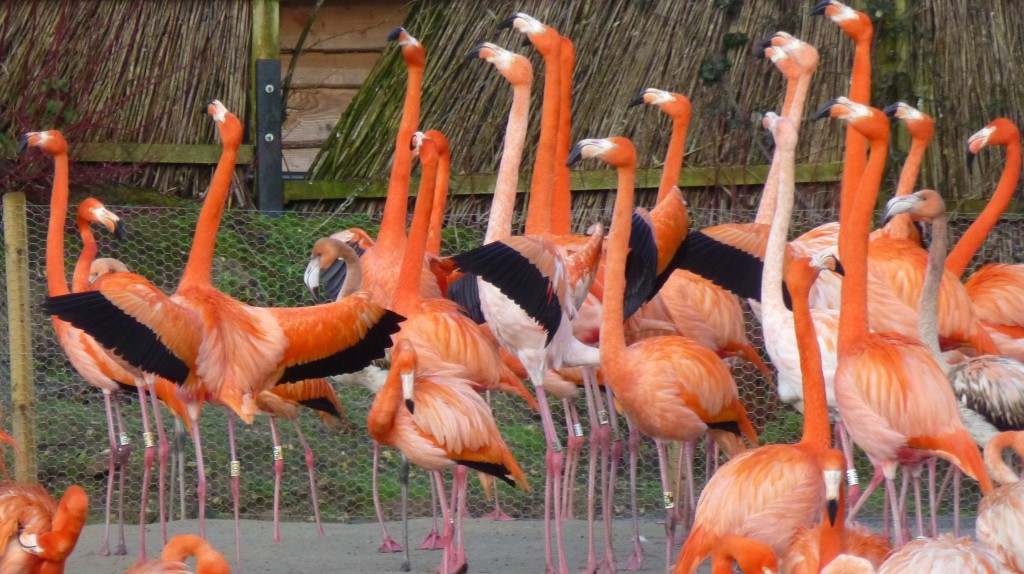
Flamingo Lagoon affords some excellent views of the displaying birds and any budding animal behaviourists should be able to pick out, or have a go at picking out, who is really important to flirting! Try looking for the very tall boys in the flock. These can't be missed as they quite literally tower over all of the others. Greater flamingos are the tallest species and it is impressive to see just how much of a difference there is between males and females- check out the photo below as an example.
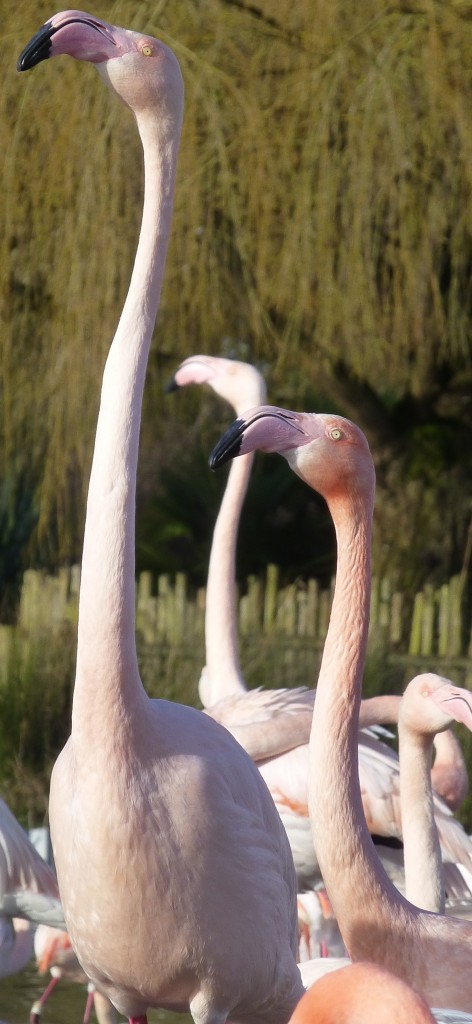
What's great about the sunken hide in Flamingo Lagoon is that you can be on a similar level to the birds, or peering up that them as they flounce past. The views you can get of head-flagging show just how impressive this display is at getting the flamingo noticed or helping it stand out from the group.
https://www.youtube.com/watch?v=eOT2xkibcbM
Flirting being instigated by the boys is happening in the Chilean and Caribbean flocks too. The Chileans display much more quietly than the Caribbeans or greaters, and they have a more refined courtship dance, which I have talked about before. But they still get excited and you will still see lots of head-flagging. The Caribbeans, it sometimes seems, just like to shout! And can be heard from across the grounds at Slimbridge. The clip below shows the "ripple effect" that happens when one flamingo gets really excited and then the others join. Caribbeans love a wing salute, and this spreads from one side of the flock to the other.
https://www.youtube.com/watch?v=KQ3mTiMtOXk
The Chilean flamingos will spread out all over their enclosure to display. Out of all six species, the Chilean flamingo displays in the loosest, most open groups. Caribbean flamingos for examples, pack much more tightly together when they display. So it is important for Chilean flamingos to have space for flirting. If you compare how the greaters and Caribbeans display to the Chileans, you will see that in these first two species more birds will be close together head-flagging than in the Chilean group. Chileans like a big dance floor! And they certainly have one in the South American Pen, as you can see below.
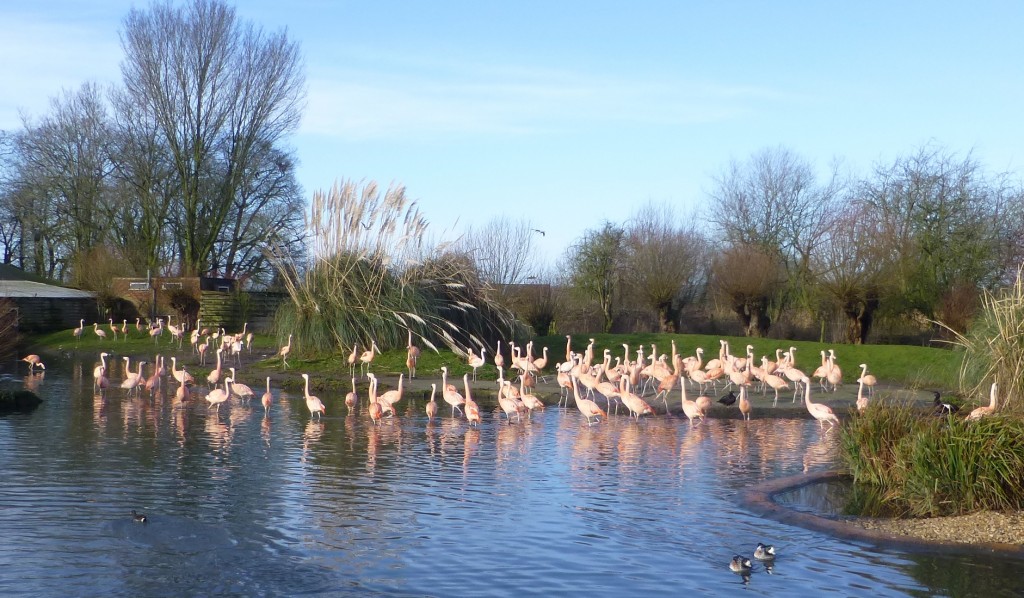
The majority of the flock, in the photo, are displaying. You can tell this from the position of their heads and necks. This is a good sign and keep your fingers crossed it carries on. Whilst Chileans are quieter, and like a bit more room, the effect of their courtship dance is still contagious across the flock. The clip bellows shows some head-flagging Chilean flamingos and you can see how they are trying to get more birds involved in the dancing (you can also pick out males and females from each other).
https://www.youtube.com/watch?v=wNcSunhdUTA
For those super keen on animal behaviour, greater and Caribbean flamingos have been doing something very special, which is not that often seen. They don't do this behaviour as well as the lesser or Andean flamingos can, but its still pretty cool to see. Once a flock winds itself up into a real breeding frenzy, they will march. Lesser flamingos are famous for marching, and the Slimbridge Andeans do an awesome job of this too. Greaters and Caribbeans, well... they try, but they look more like a rugby scrum than a coordinated ballet.
Marching in these two species involves running in the same general direction as your friends, shouting loudly and arching your neck into a kind of "hook" shape. They will run in one direction, then turn around and come back on themselves. There's a clip of each species doing this below. In the film of the Caribbeans displaying, marching happens around about 1:20.
https://www.youtube.com/watch?v=ZyivwH7fbjg
https://www.youtube.com/watch?v=Sqn75aBMbu0
There's also some lovely views of the greater flamingos wearing their make-up. In the photo below, you can see some birds have much more pink "blusher" on their heads and necks. There are several adult females on the left of the picture that are very pink, and an adult female in the middle that is less pink. The young birds (darker, more grey beaks) are not yet old enough to use this pink cosmetic oil from their preen gland (they have yet to store and process enough carotenoids).
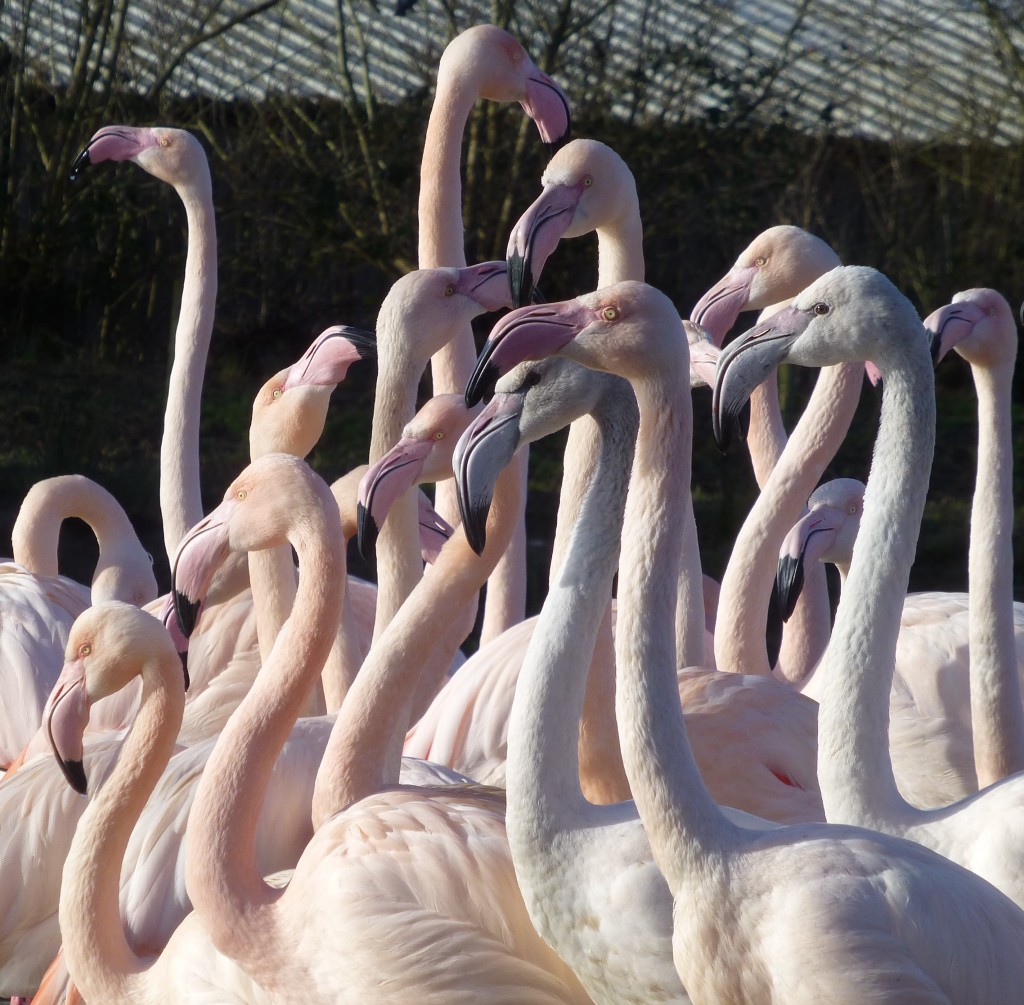
There's certainly a lot to keep you busy flamingo watching, and I hope that the birds put on a good show for you on your next visit to Slimbridge. Keep an eye out for this courtship displaying intensifying over the next weeks and months, as you will see plenty more flirting flamingos as winter turns into spring.
